“I thought she was pretty nice,” he said. “But I had a few things I had to sort out.”
Like how would a girl like Joy from the east settle down to life with his family at isolated Honeymoon Bay. Idyllic as the bay is, it perches at the end of some of Australia’s most notorious roads, hundreds of kilometres from Kununurra in the east and Derby in the west.
Floods cut the roads in the wet season, when for months access is only by plane or barge.
Honeymoon Bay lies 35km along a dodgy road from Kalumburu and almost 200km north of the Gibb River Road. Kalumburu is an indigenous community of 450 in a native title tract of land on the northern coast of the Kimberley.
Les’ grandfather, Leslie French, as a traditional owner, was granted a lease for Honeymoon Bay, where he had a fishing camp business. It is run as a separate entity to the town of Kalumburu.
“We don’t make much money from the camping,” said 32-year-old Les, “so most of my family works at other jobs.”
From the time he was eight he was taking campers out on fishing trips. “I wasn’t big enough to start the outboard so I would get one of the tourists to get it going for me. After we finished fishing I would get someone to start it for me again when we came back.”
He loves his life in the Bay and, after stints in Perth, Melbourne and Sydney, has no desire to live anywhere else. Balmy weather, warm seas, fishing, crabs, magnificent oysters …. the occasional croc patrolling the bay.
In the wet when the temperatuers rise on still days that turn the sea into a mill pond, Les wades among the mangroves calf-deep and happily spears mangrove jack about half a metre in length.
He has seen the city side of life. He studied at the Perth acting academy and from 1998 worked for seven years as an actor based in Sydney and Melbourne.
“That was a real culture shock. Sydney.” He shook his head. “So many people. The monorail. All the trains.”
He enjoyed the experiences of working behind cameras and on stage. “The people were good. Lots of good times.” Pause. Grin. “Lots of girls.”
It’s not hard to imagine a bit of a line-up at the stage door for the tall bloke from the Kimberley but whenever he could Les caught a plane back to Honeymoon Bay. “I’d work over there a bit then come back and work here a bit.”
Then he decided no place was as good as Honeymoon and found enough work to hold him there all year.
Six years ago Les was working at a Paspaley pearl farm near Kalumburu when he struck up a friendship with Joy, a foreman aboard one of the pearl chipping boats.
Zimbabwe-born Joy was from Brisbane. She had become frustrated at not finding permanent work in the city, working five jobs to try to build a nest egg.
“I wanted a job where I could put some money together. I heard about the pearl business but you had to be in Darwin to get a job, so I rode my motorbike up there and slept on the couch of friends of friends until I got the job.”
When two sets of hazel eyes met over the pearl shells, a relationship grew but Les was cautious about how Joy would fit into life at the top end of the Kimberley.
First she had to meet the family. “I wasn’t sure how they would get on but my grandfather picked us up from the beach when we were dropped off from the pearl farm. By the time I had everything ready and we were on our way into Kalumburu he and Joy were chatting away just fine like they had known each other for a long time.”
That was a relief – but Les had to talk Joy through another obstacle. “She was a vegetarian. I said OK, she didn’t have to eat meat, but if she was going to live here she would have to learn to eat fish.”
Joy nodded and tucked into fresh seafood banquets from the Davey doorstep. They were married last year and to their delight will become parents in September.
Joy and Les now manage the Honeymoon Bay camp area. She has also been working at the Kalumburu school and is quite proud of the fact that she negotiated the floodways through the wet to get to work. “I knew what the road under the water was like because I had driven it in the dry so it wasn’t too bad. There was only one day when I said ‘Nope’ and turned back.”
We arrived at Honeymoon on a Sunday afternoon, setting up camp on the beach and wandering down 30m to the gently lapping water. As the sun set Tony threw in his toy line ($5 collapsible rod, $5 reel) and within three seconds was coaxing a 56cm golden trevally ashore.
We booked in for two nights, collected the biggest oysters we have ever shucked, admired the rudimentary shower and toilet and booked in for another two nights. We had almost made it to Kalumburu three times before: having finally made it we needed to relax and enjoy.
We did that and also managed to catch a swag of red saddletail snapper and mangrove jack. We found Ken and Shirley from Moama on the Murray. They have stayed at Honeymoon for three months for each of the last 12 years. A family group from Orange also spend three months every winter at Honeymoon. “Why wouldn’t you? It’s snowing down there.”
It is easy to see why they stay for months and why Les is home at Honeymoon Bay for good. It’s on our “Do It Again” bucket list.
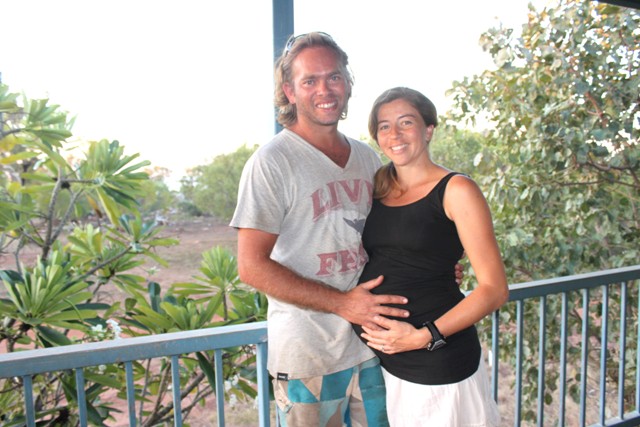
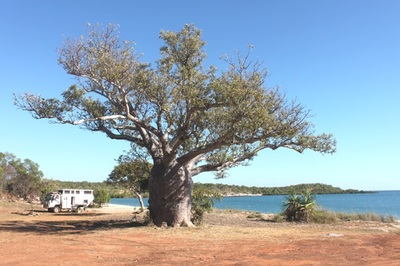
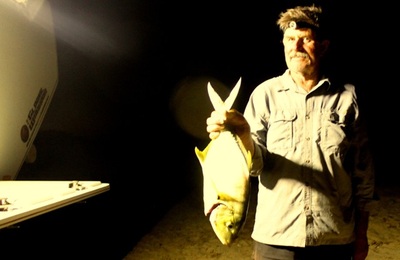
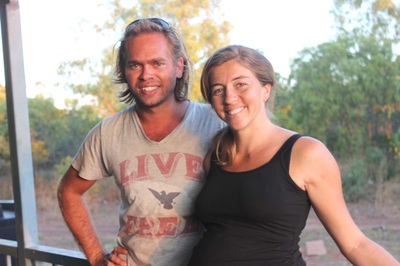
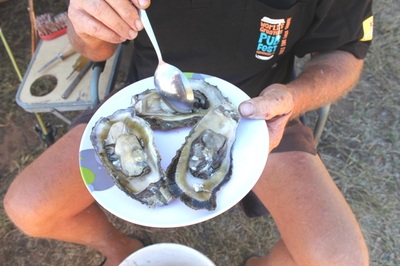
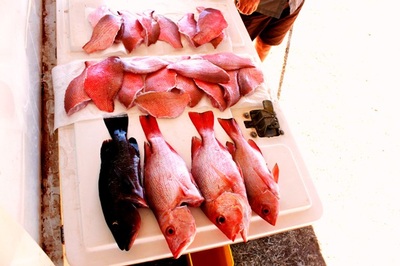
 RSS Feed
RSS Feed
